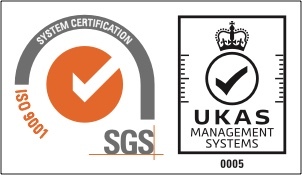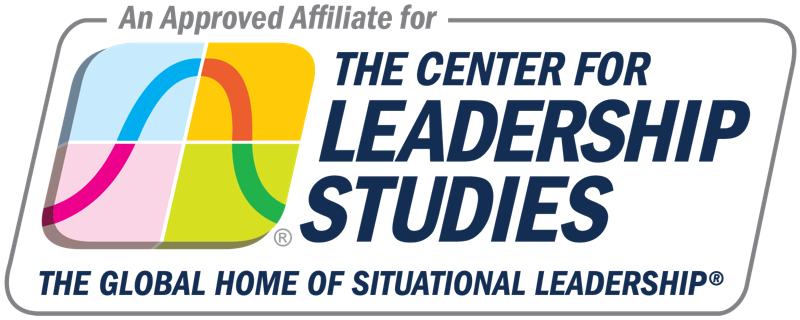
Diagnose the needs of your followers first!
If doctors prescribed medicine before understanding the symptoms, they would lose their right to practice. Similar malpractice occurs when Learning & Development reacts to training requests without first completely understanding the needs of both your employees and the business itself.
“I suppose leadership at one time meant muscles, but today it means getting along with people.” Mahatma Gandhi
L&D must diagnose before it prescribes. GBS Corporate Training's approach is to ask “critical questions” in the first phase of discovery so that we build the content in order to meet organisational outcomes which can then be measured. This is particularly true of our Situational Leadership® training, where it is important to understand and follow the needs of ‘followers’ in your organisation or business unit before you can prescribe the appropriate and most effective leadership styles to use.
In this blog, you will learn about:
- The basics of the Situational Leadership® model
- A framework to diagnose your followers
- The four main leadership styles
- How to get your leadership prescription right
- How GBS can create tailored Situational Leadership® training for your organisation
The Situational Leadership® model
Situational Leadership® is an adaptive leadership style. This strategy encourages leaders to take stock of their team members, weigh the many variables in their workplace and choose the leadership style that best fits their goals and circumstances.
“A situational leader is anybody anywhere who recognizes that influencing behavior is not an event but a process” Dr. Paul Hersey
Situational Leadership® is the model of choice for organisations around the world that want to do the following:
- Develop people and workgroups
- Establish rapport and to bring out the best in their people
- Use a common leadership style across all units in an organisation, be it local, national, or international
Situational Leadership® is flexible. It adapts to the existing work environment and the needs of the organisation. Situational Leadership® is not based on a specific skill of the leader; instead, you can modify the style of management to suit the requirements of the organisation.
One of the keys to Situational Leadership® is adaptability. Leaders must be able to move from one leadership style to another to meet the changing needs of an organisation and its employees. These leaders must have the insight to understand when to change their management style and what leadership strategy fits each new paradigm.
Diagnosing the needs of your followers first
Developed by Dr. Paul Hersey in the late 1960s, the Situational Leadership® model is a powerful, yet flexible tool that enables leaders of all kinds ( Managers, Salespeople, Peer Leaders, Teachers or Parents) to more effectively influence others.
Dr. Hersey’s Situational Leadership® model is based on the relationship between leaders and followers and serves as a framework to analyse each situation based on:
- The amount of guidance and direction (task behaviour) a leader gives
- The amount of socio-emotional support (relationship behaviour) a leader provides
- The readiness level that followers exhibit in performing a specific task, function, or objective
The Situational Leadership® model provides leaders with an understanding of the relationship between an effective style of leadership and the level of readiness followers exhibit for a specific task.
Along with leadership qualities, Hersey defined four types of development for followers or employees:
- Low Competence: High Commitment
- Some Competence: Low Commitment
- High Competence: Variable Commitment
- High Competence: High Commitment
Prescribing the right leadership style
According to the needs of followers, a Situational Leader adapts their leadership type. The Situational Leadership® model is based around four specific styles of leaders:
- Telling leaders = S1 (specific guidance and close supervision): These leaders make decisions and communicate them to others. They create the roles and objectives and expect others to accept them. Communication is usually one way. This style is most effective in a disaster or when repetitive results are required.
- Selling leaders = S2 (explaining and persuading): These leaders may create the roles and objectives for others, but they are also open to suggestions and opinions. They “sell” their ideas to others in order to gain cooperation.
- Participating leaders = S3 (sharing and facilitating): These leaders leave decisions to their followers. Although they may participate in the decision-making process, the ultimate choice is left to employees.
- Delegating leaders = S4 (letting others do it): These leaders are responsible for their teams, but provide minimum guidance to workers or help to solve problems. They may be asked from time to time to help with decision-making.
Getting the prescription right for the diagnosis
Situational Leadership® means “choosing the right leadership style for the right people,” according to Blanchard and Hersey. It also depends on the competence and maturity of the followers.
“Leadership is a series of behaviors rather than a role for heroes” Margaret Wheatley
The Situational Leadership® model ensures effective leadership practice is followed. By mapping specific leadership styles of the needs and types of followers, leaders will get their prescription right!
Hersey suggests that each of the four leadership approaches should be paired with different “maturity levels” among team members. For example, the lowest maturity level (M1) should work best with the “telling” style (S1), while the highest maturity level (M4) should be most responsive to the “delegating” approach (S4).
To get the prescription right, a Situational Leader must employ the following behaviours:
- Insight: The Situational Leader must be able to understand the needs of the followers, then adjust his or her management style to meet those needs
- Flexibility: Situational Leaders must be able to move seamlessly from one type of leadership style to another
- Trust: The leader must be able gain their followers’ trust and confidence
- Problem solving: The Situational Leader must be able to solve problems, such as how to get a job done using the best leadership style available
- Coach: The Situational Leader must be able to evaluate the maturity and competence of the followers and then apply the right strategy to enhance the follower and their personal character
GBS can help you prescribe and diagnose the right leadership training for your organisation
At its core, Situational Leadership® provides leaders with an understanding of the relationship between an effective style of leadership and the level of readiness that followers exhibit for a specific task. But, it does much more than that …
Enabling others to act is what being a Situational Leader is all about. Depending upon the task at hand, the process of enabling could translate to a number of different leadership approaches. Recognition of that reality entails coming to grips with the notion that leadership isn’t necessarily about what followers want; it is much more about what they need.
GBS Corporate Training is the sole UK provider of Situational Leadership® training. GBS provides a series of Situational Leadership® training courses related to different applications of the model. We help leaders to learn to appropriately balance their task direction with proper use of their power bases with their staff, which helps to maintain high levels of consistent performance across team members.
We also run Situational Leadership® Accreditation which is designed to equip trainers with the necessary skills and knowledge to deliver licensed Situational Leadership® within their own organisation.
Situational Leadership® will equip leaders in your organisation with the tools necessary to skillfully navigate the demands of an increasingly diverse workforce and evolving global marketplace. Infinitely adaptable to any circumstance, the model prepares leaders to address the most pressing challenges pervasive in today’s work environment.






